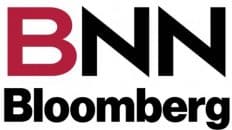In this week’s En-Pro Petroleum Report, I’d like to share with you a Q&A interview I did with a concerned consumer about fossil fuels. These are some of my answers to questions I believe many others have for the oil industry and politicians. For the latter, my advice is, ignoring a problem doesn’t make it go away; and re-naming a tax doesn’t make it go away either.
Q: Do you expect fuel prices to continue to rise due to the war in Ukraine? If so, how high?
A: The longer the conflict, the higher prices will go. The closer the national average gets to the tweaking point of $2.00/L, the tighter politicians’ collars will get, which will force them to offer, “temporary relief” in the form of lower taxes. But this move will just come back with vengeance in some form or another to a, “new, improved, and re-named” form of taxation. If the pump prices are tied to crude prices, then politicians can’t control the cost because it is set globally. Like it or not – OPEC + still calls the shots and Russia is the “+” in OPEC +.
Q: With new lockdowns in Hong Kong and other Chinese cities, and the potential of a new Iran nuclear deal, could we see prices decline?
A: Iran could release 700,000 bpd into the market, but Russia will discourage this since more crude from Iran would just steal Russia’s market share. You would need to see lockdowns in the U.S., not China. With President Biden facing mid-term elections, he is unlikely to force consumers back into lockdown mode on one hand, and he can’t antagonize the U.S. consumer with a continuation of spiraling pump prices on the other. One way to lower prices would be to increase crude oil inventories. This could be accomplished by giving U.S. shale producers a free hand to open the spigots. But this is fraught with risks for the president who has labeled himself and his party, ‘anti-fossilers.’
Q: Why haven’t fuel prices quickly followed the direction of crude oil prices?
A: Western Canada follows the Western Canadian Select (WCS) price movements (not necessarily West Texas Intermediate (WTI) or Brent) with a delay factor, while the east follows the daily futures cash prices changes at New York Harbor, and these are reflected at the pump almost immediately.
Q: Do crude oil prices have a distinct effect on diesel and gasoline prices?
A: The cost of crude is the largest factor in the pricing equation for all refined products: diesel, heating oil, gasolines, and jet fuel being the main ones. Aside from direct crude costs, the weekly status of U.S. inventories of refined products can radically move pump and rack prices overnight. The current record high diesel prices we are seeing are spiking not solely due to the cost of crude, but more importantly based on the fact that U.S. distillate levels are now 17% below the 5-year average and appear to be in free fall, while demand is going in the opposite direction – and fast.
Q: What do you expect to see over the coming weeks or months?
A: The war in Ukraine will determine prices over the immediate term with prices fluctuating daily if not hourly. Even if the conflict were to disappear off the headlines today, the supply/demand situation in North America is one whereby demand is intense, but supply is diminishing. The only way to tame prices is to reduce demand. With the consumer emerging from over two years in lockdowns, there is a pent-up urgency to get back to work, back on the road, and back in the air. Demand will therefore increase as will prices.
It’s clear President Biden didn’t have a crystal ball when he was first elected to foresee Russia’s invasion of Ukraine. But some pundits have said from the start of his presidency that canceling the Keystone XL pipeline, and his crackdown on the oil and gas sector has backfired, and North America could be in a far better position than it is now with this tragic war in Ukraine.
– Roger McKnight – B.Sc., Senior Petroleum Analyst








Add comment